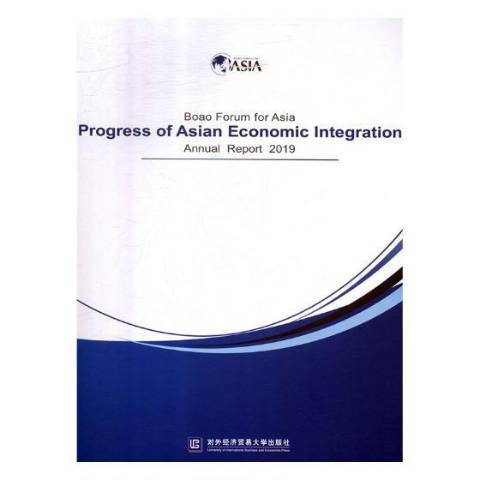內容簡介
The world trading system is wracked with uncertainty and risks of inefficiency tinked to new forms of exclusive trading blocks. This challenge follows from the emergence of trade disputes between major players in the trading systems, involving the US and China in particular. In turn, the origins of those disputes lie in the success of the trading system to faafitate some developing economies onto a fast-growth track, but also its failure to adapt to new environments. The consequences are significant because the trade conflict negatively affects economic output, create uncertainty in trade, lead to the formation of new subsystems and force countries to make a choice among the sub systems. -rhe Chief Economist for the World Bank Goidberg draws parallels with disputes of the 1980s, which led to a stronger system. She believes that if countries were to cooperate constructively, the same could happen again today.
It is undoubtedly true that today's wortd is different from that in the past. The important aspects of this difference may be represented by the development of global value chains (GVC), the increased importance of services in manufacturing production and expanding digitaJ trade, Today, global value chains account for three quarters of the world trade. Among the three global factories-Factory Asia, Factory Europe and Factory North America, Asia shows a relatively higher regional concentrarion in the value chain trade than do NAFTA or those linked to EU. Recent decades have seen increasingly close linkages between services and manufacturing industries, referred to as the process of "serviaflcation". In this process, services play three different roles in manufacturing production which may be summarized as "out, in and with". "Out" refers to buying services as inputs for manufacturing production, that is, outsourcing. "ln" refers to the firm's in-house capacity in the provision of value added. "With" refers to selling bundles of goods and services by a manufacturing firm, One of the drivers of the evolution of global value chains and the service sector is the developments in digital technologies. The digitalization has had a major impact on trade. It aggregates global demand and lowers the cost of exporting. It faalitates the entry into trade by smail and medium enterprises. It reduces the capital
requirements for establishment in many traded services. There is evidence that barriers to services and inefficient digital platforms could hurt ma n ufactu ring prod uction, th us justifying the service trade liberalization to improve manufacturing productivity.
The current dispute between China and the US involves a number of issues such as provision of subsidies, dumping of products and IP (intellectual property) issues including forced technology transfers, patent violation and espionage. The US unilateral measures are linked to different parts of the US Trade Act such as injury (Section 201), security (Section 232) and IP (Section 301). Other issues have also emerged in the US-China dispute such as the US security requirements in the construction of the digitaJ infrastrucrure, FDI flows, and access to emerging technologies. The US has ruled against Chinese investment in critical IT-related infrastructure and this policy has been followed by a number of US alliance partners such as Australia, New Zealand, Taiwan Province of China and Japan.
圖書目錄
ACRONYMS
F0REWORD
LIST OF CONTRIBUTORS
Chapter 1 Directions of Asian Economic Integration amid US Bilateralism and a Weakened Multilateral Organization
1.1 Introduction
1.2 Con text
1.3 State of Play in the US Bilateral Strategy
1.4 State of Play in the Multilateral System
1.5 Directions of Regional Trading Arrangements
1.6 Next Steps
Chapter 2 Recent Trend of Asia's Trade and Investment
2.1 Trade of Asia in 2017
2.2 Asia's Trade in Intermediate Goods: A Surprising Recovery
2.3 FDI Inflows and Outflows in Asia
Chapter 3 Trade lnterdepence among the Asian Economies
3.1 Measuring Asia's Trade Integration
3.2 Evolving Trade Interdependence among Key Asian Economies
3.3 Trade Flows among Selected Asian Economies
3.4 Asia's Trade in Intermediate Goods: Direction of Flows and Interdependence
3.5 Accounting for the Value Added Creation in Asian Merchandise Exports
Chapter 4 Interdependence among the Asian Economies in Factory Asia
4.1 The Pattern of lnterdependence in Factory Asia Remained Stable
4.2 Product Dependence and Distribution of Competitive Advantages
4.3 Pattern of Competitive Advantages among the Three Global Factories
Chapter 5 FDl Interdependence in Asia
5.1 Interdependence Index of lnward FDI
5.2 Interdependence Index of Outward FDI
5.3 FDI Interdependence in Asia
Chapter 6 Integration in Asia's Service Sector
6.1 Trade in Services for Asia: beyond GATS
6.2 Asia Tourism Integration Index
Chapter 7 Financial Integration
7.1 Portfolio Investment: Growth Acceleration and Unbalanced Regional Distribution
7.2 De jure and de facto Financial Openness of Asia
7.3 Index of Business Cycle Synchronization
7.4 Stock Market Correlation Index in Asia Outlook
Appendix Important Events of the Asian Economic Integration
REFERENCES
ACKNOWLEDGEMENTS

